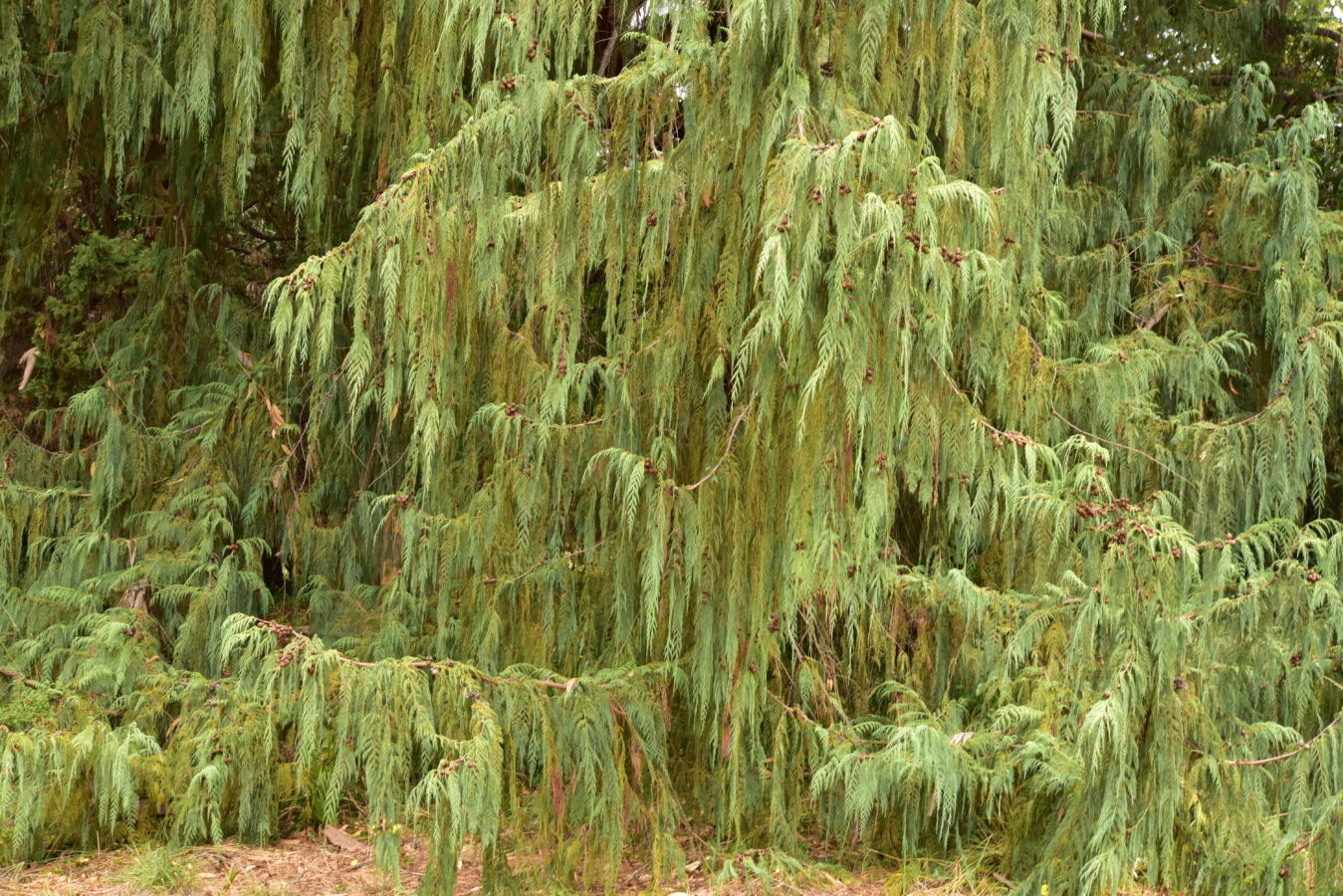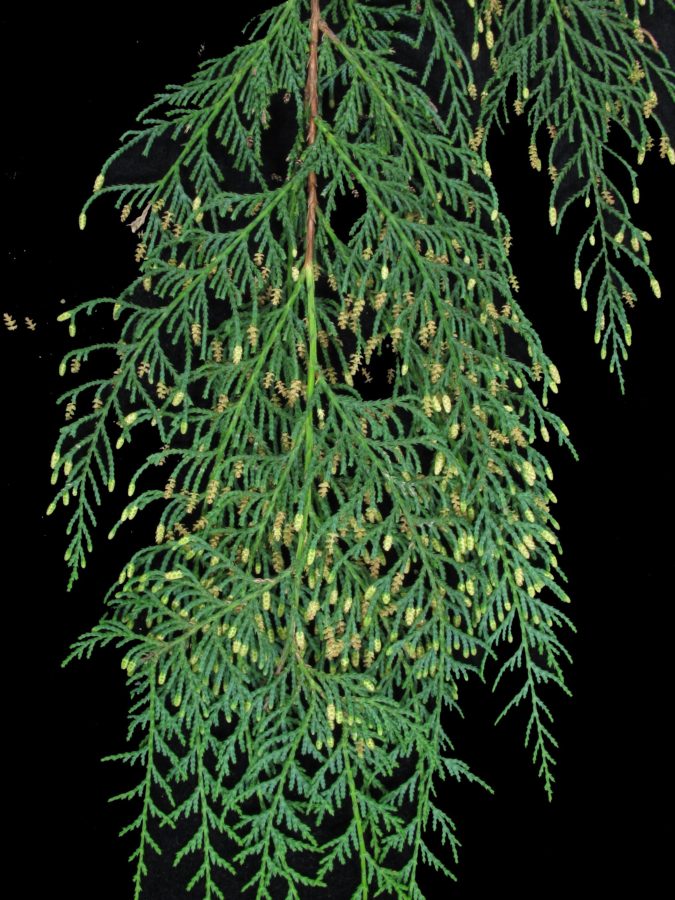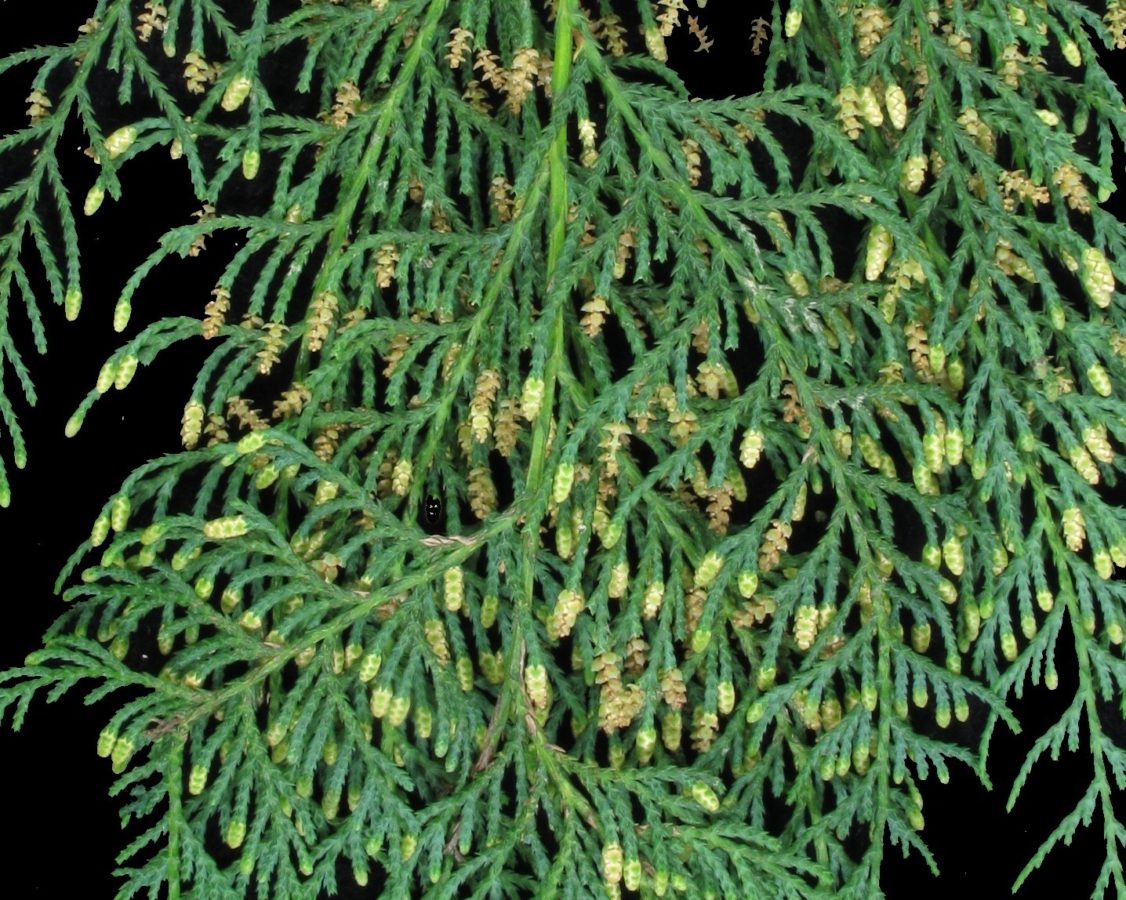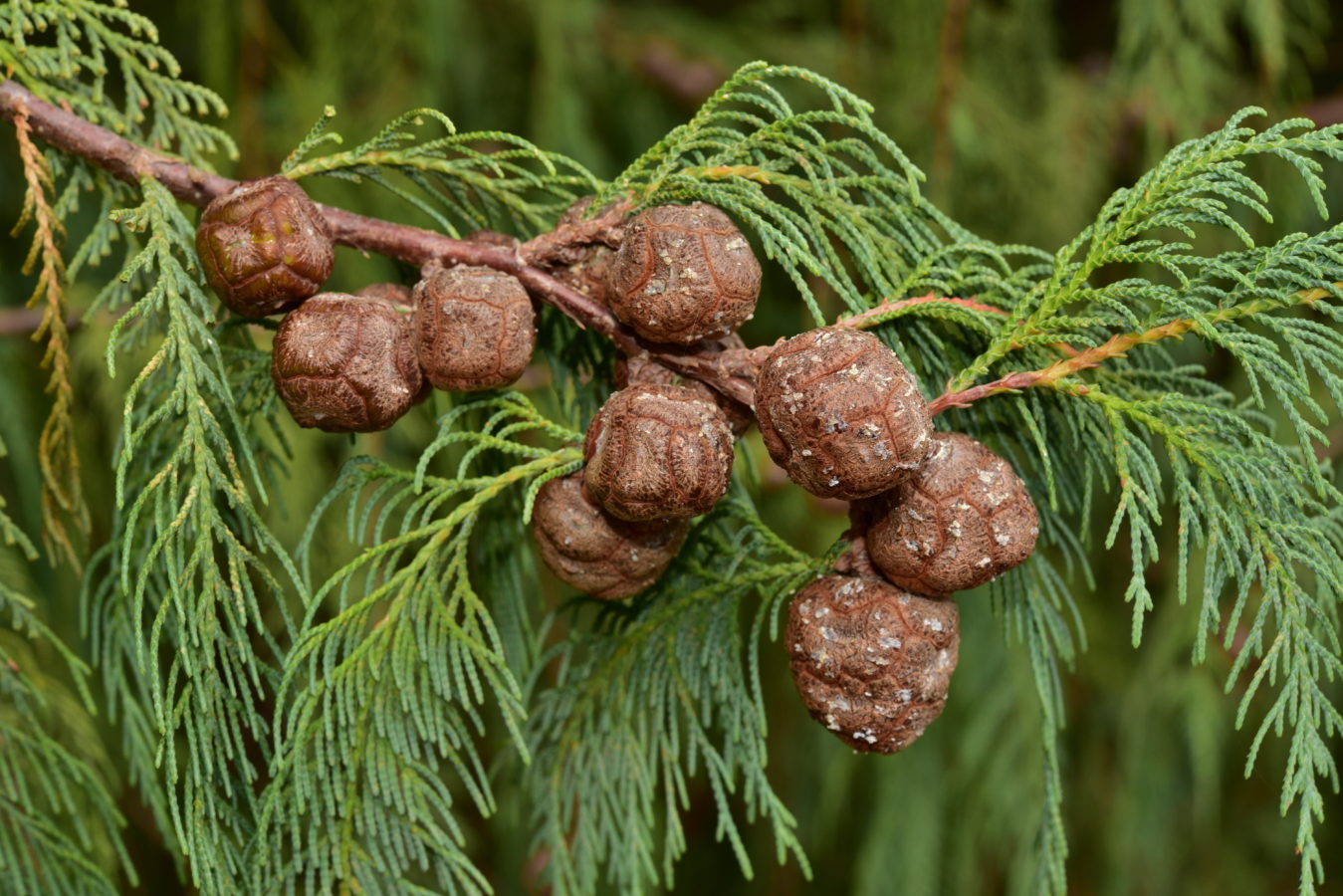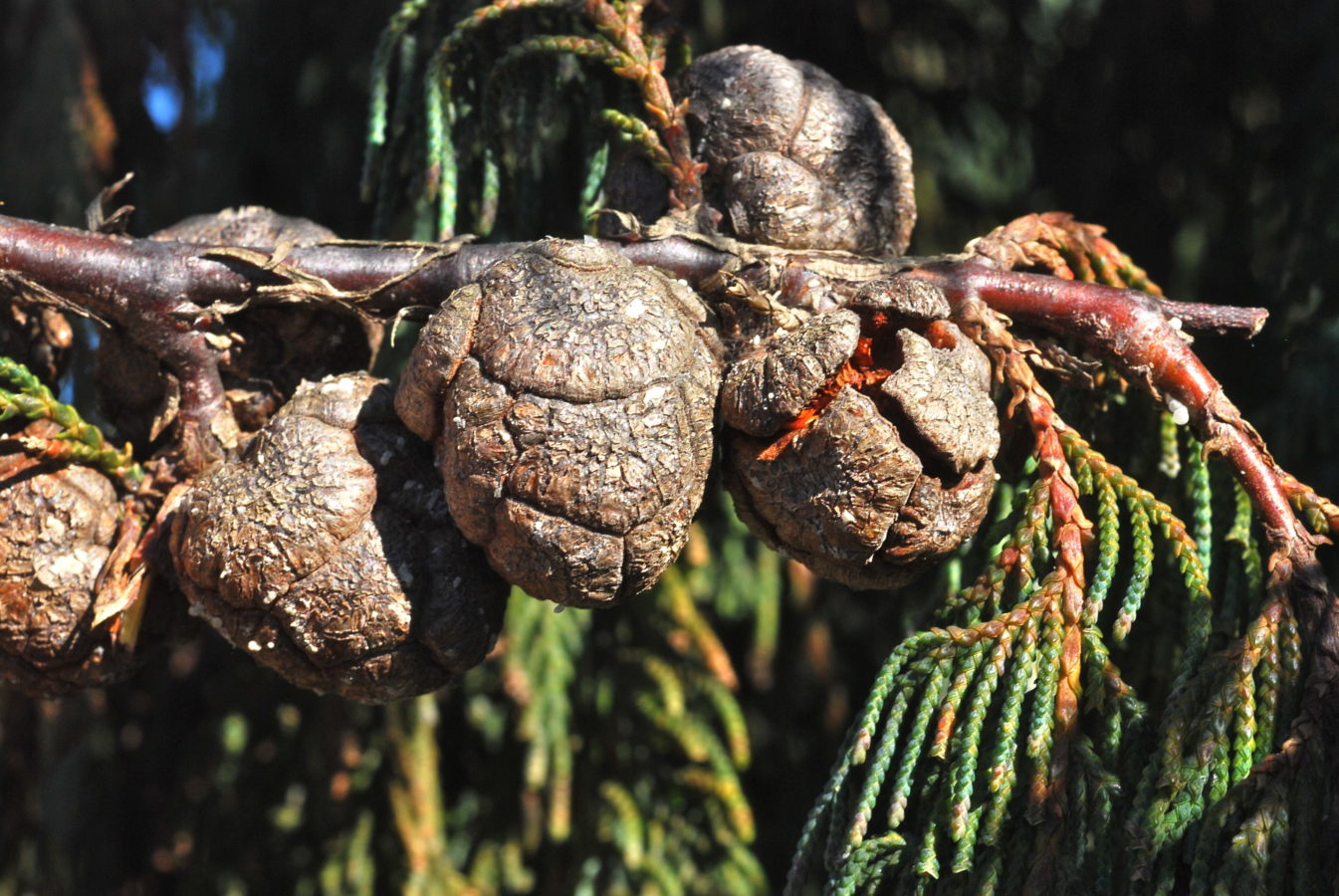Cupressaceae
Cupressus cashmeriana
The sacred tree and national emblem of Bhutan has been heavily exploited for its timber that is an essential part of Bhutanese temples. Very few natural stands remain, and these are almost all in remote inaccessible valleys. Frequently cultivated in Bhutan, NE India and Nepal.
Description
Taxomonic notes:
The taxonomy and nomenclature of this species have been controversial. Alternative names that have been proposed include C. pendula Griff. 1848 (a later homonym of C. pendula Thunb. 1783), C. tortulosa Griff. (proposed for official rejection for being obscure as well as ambiguous in its original spelling) and C. corneyana Carrière. The debate has not been resolved: until it is, the IUCN Redlist, along with other major reference sources such as the Catalogue of Life continue to use C. cashmeriana to refer to the wild Weeping Cypress of Bhutan.
Human Uses
The uses of this tree are ornamental, religious, possibly medicinal; timber harvesting may now have ceased largely due to scarcity and inaccessibility of remaining wild populations. This species is commonly planted in Buddhist monasteries and temple grounds in Bhutan (from where it was first described by William Griffith), NE India, Sikkim, and near Darjiling. It is surely the most ornamental of the true cypresses and the monks undoubtedly are responsible for unnamed cultivars with especially drooping branches and glaucous foliage known to Europeans prior to their discovery of populations in the wild, which show a mixture of these and other characters. Some of these forms are quite hardy, others only survive in areas with mild, virtually frost-free winters such as in southern Europe. Probably the most famous tree in Europe is a very broadly crowned, multi-stemmed specimen on the Isola Madre in Lake Maggiore, northern Italy, now sadly in a poor state after a storm.
References and further reading
- Farjon, A. (1994) Cupressus cashmeriana. The Kew Magazine 11(4):156-167.
- Farjon, A. 2010. (1920) Proposal to reject the name Cupressus tortulosa (Cupressaceae). Taxon 59(1):297.
- Kaka, D. Gurung, Y. Khandu, O. Katel, P. Chhetri, P. Wangda (2014) Population structure of Cupressus tortulosa Griffith along the altitudinal gradients of Tsendenanag Ridge in Punakha, Bhutan. Bhutan Journal of Natural Resources & Development 1(1):24-31.
- Maerki, D. (2014) Two distinct Himalayan cypress species: Cupressus tortulosa and Cupressus cashmeriana. Bulletin of the Cupressus Conservation Project 3(3):99-115.
- Maerki, D. (2014) Typification of Cupressus tortulosa Griffith. Bulletin of the Cupressus Conservation Project 3(2):69-76.
- Maerki, D. (2013) Which Latin name for the Tsenden. Bulletin of the Cupressus Conservation Project 2(2):39-72.
- Miehe, G., S. Miehe & D. Gurung (1999) Plant formations in central Bhutan and the challenges of conserving biodiversity II: Follow-up survey of natural Tsenden stands October - November 1999. Bhutan-German Sustainable RNR?-Development Project (BG-SRDP). Project Document 44.
- Wangdi, T., N. Norbu, P. Dendup, R. Singye, B.B. Chettri, K.N. Ghimeray (2012) In Search of Sacred Giants: An Assessment of Tsenden Forests in Bhutan. Uwice Press, Bumthang
- Zhang, D & Christian, T. (2013) Cupressus cashmeriana. The IUCN Red List of Threatened Species 2013: e.T32311A2813777. http://dx.doi.org/10.2305/IUCN.UK.2013-1.RLTS.T32311A2813777.en. Downloaded on 22 July 2016.
